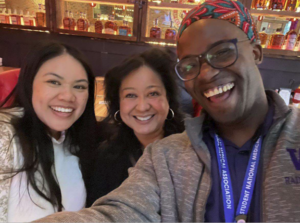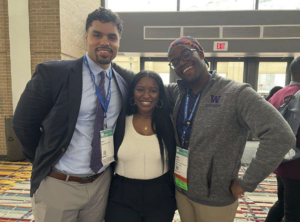Endowment supports doctor’s diversity, equity and inclusion activities
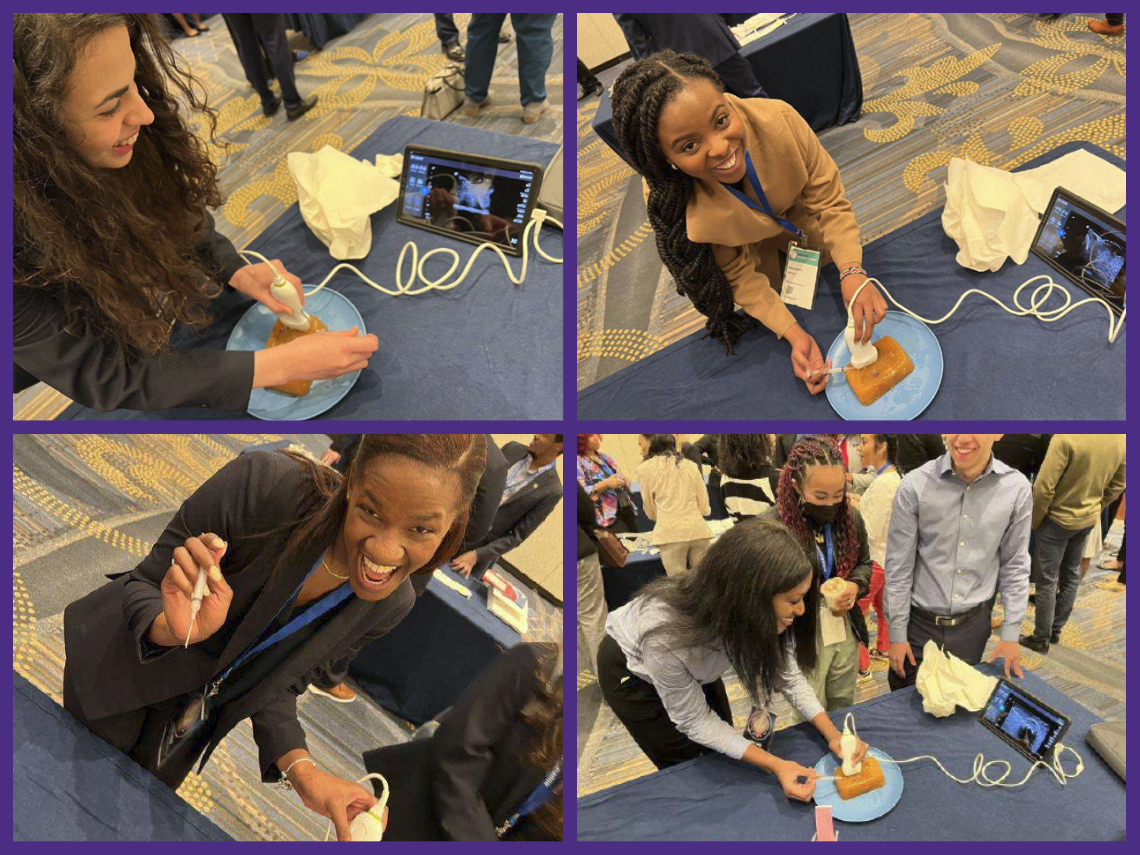
By Adlai Grayson, M.D.
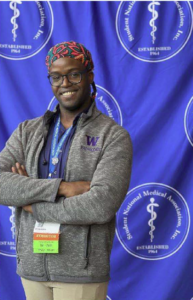
Dr. Adlai Grayson
“The largest gathering of underrepresented minority medical and premedical students across the United States and the Caribbean, the Annual Medical Education Conference (AMEC) gave attendees several days of innovative programming geared at preparing the next generation of physicians for successful careers in medicine.
With dozens of educational workshops and programs focused on academic and clinical success, professional development, and personal growth, AMEC is a premier experience that catapults attendees toward becoming clinically excellent, culturally competent, and socially conscious physicians. Attendees enjoyed the unique opportunity to network with colleagues, physicians, medical school and residency program representatives, and partners from all over the country.” 1
I attended this conference to help the Department of Radiology achieve its stated Equity, Diversity, and Inclusion goals, which includes a prong called “Build a Pipeline.” An action item within this plan is to promote the recruitment and advancement of underrepresented groups. It is encouraging to see that our department has already publicly acknowledged the need for institutional buy-in toward pursuing these ambitions.
As an exhibitor at the recruitment fair and exhibitor hall, over three days I presented our program and services to medical students and interns interested in pursuing radiology as a career. We discussed the benefits of living in Seattle while being trained in a supportive environment. Many students wanted to make sure that I felt welcome in the reading room and if I found my people. It wasn’t hard to reassure them that UW nourishes identity and wellness just as much as it does education and innovation.
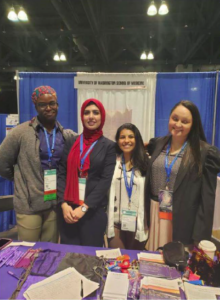 As a participant in the conference, I engaged with a wide range of students and trainees from regions across the country. All of these individuals identified as a part of a group that is underrepresented in medicine. I met with high schoolers on the bus ride between the hotel and the conference that were stunned by hearing about the life of a young Black doctor.
As a participant in the conference, I engaged with a wide range of students and trainees from regions across the country. All of these individuals identified as a part of a group that is underrepresented in medicine. I met with high schoolers on the bus ride between the hotel and the conference that were stunned by hearing about the life of a young Black doctor.
I was recruited ad hoc by American College of Radiology representatives to show pre-med and medical students how to biopsy frozen grapes in phantom molds to teach fundamentals of ultrasound. I remember going to local radiology workshops as a medical student and finding out how cool it was to use the tools that radiologists use to help people. I remember being so thrilled talking with residents and other healthcare professionals at these events. I got to talk with residents who were planning on switching into Radiology. Not surprisingly, I ran into other residents who I went to medical school with, giving presentations, facilitating discussions, or acting as representatives of their respective programs.
On top of being an exhibitor and engaging with other trainees, I partook in several discussions with leaders in the field regarding the future of health care policies and how they affect vulnerable populations. Many of the professionals fighting this battle take time outside of work to talk to the county, state and federal representatives to convince them of the value behind some policies. They encouraged young doctors to pay attention to the policies in place, listen to their patients, and stand up for what they believe in. They wanted us to continue to fight for those without a voice. These were some of the goals that stuck with me:
•Making changes at one’s home program to make it more inviting
•Making sure our efforts toward inclusivity are public
•Ensuring there is a clear office with a mission statement that champions the goal
•Graduating well-rounded, exceptional radiologists with social and emotional intelligence
Of the dozens of students who came to our table, approximately 67 signed onto our general interest list. Eight of those students were interested in Radiology, and two of those eight were interested in lnterventional Radiology. I have been in contact with three of these students, giving them tips on applying into Radiology and my thoughts on residency. Separately, I met two students from the University of Washington’s Student National Medical Association chapter. Subsequently, in the past couple of months, we’ve talked about doing some joint resident and medical student events.
Everything that came with this event motivates me to continue to support the Department of Radiology in their pursuit of advancing UW’s diversity, equity, and inclusion as it is a proven benefit to any organization’s progress. I am deeply grateful to the Rohrmann Endowment Fund Education Endowment Advisory Committee for supporting my endeavors. I hope the committee continues to send a representative every year to show our program’s commitment to the cause.
1 Lightly adapted from the AMEC website.
